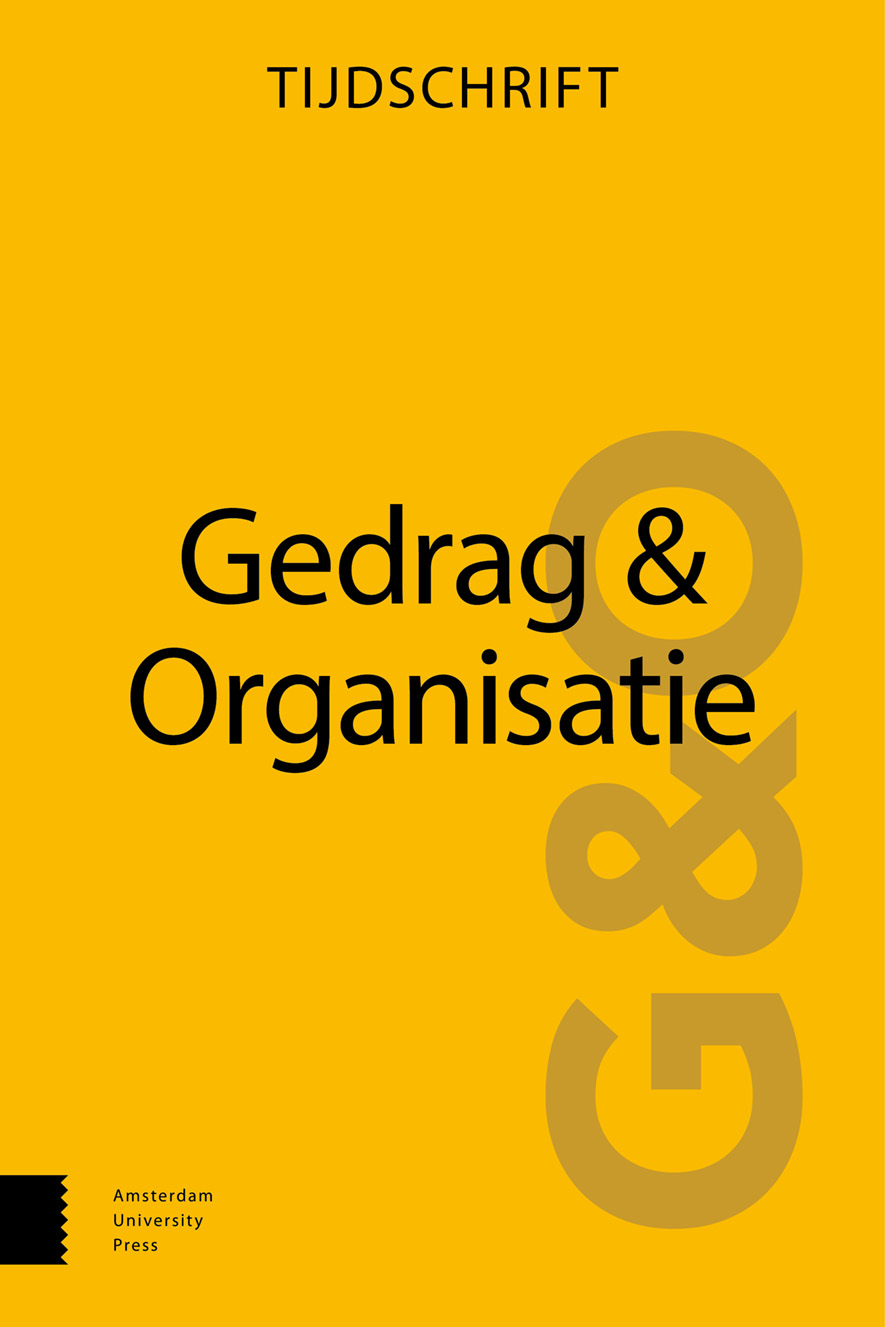- Home
- A-Z Publications
- Gedrag & Organisatie
- Previous Issues
- Volume 37, Issue 4, 2024
Gedrag & Organisatie - Volume 37, Issue 4, 2024
Volume 37, Issue 4, 2024
Language:
Dutch
- Redactioneel
-
-
-
f Inzichten in burn-out vanuit de chronobiologie, netwerkanalyse van symptomen, en behandeling: Themanummer ‘Reflectie en praktische perspectieven op burn-out’ (deel 1)
More LessAbstract Insights into burnout from chronobiology, network analysis of symptoms, and treatment: Special issue ‘Reflection and practical perspectives on burnout’ (part 1) This editorial introduces the first part of the special issue ‘Reflection and practical perspectives on burnout’. This part of the special issue discusses three articles, each with a different focus within the research and/ or practical field of burno Read More
-
-
- Artikel
-
-
-
Tijd van belang bij burn-out: Chronobiologische aspecten bij het ontstaan en tegengaan van klachten
More LessAuthors: Ybe Meesters & Marijke C. M. GordijnAbstract The importance of time in burnout: Chronobiological aspects in the development and prevention of complaints Fatigue and sleep problems are common symptoms in people suffering from burn-out. In addition to all kinds of other factors or circumstances that can play a causative or sustaining role, influence by or disruption of chronobiological processes play a role. The influences of day/night, seaso Read More
-
-
-
-
Burn-out als een netwerk van symptomen: De relatie tussen netwerkconnectiviteit van burn-outsymptomen en chronische stress
More LessSamenvatting Het doel van deze studie was om de psychometrische netwerkstructuur van burn-outsymptomen te onderzoeken en hierbij na te gaan of de sterkte van relaties tussen symptomen varieert als functie van de chronische stress die iemand ervaart. Op deze wijze illustreren we de meerwaarde van een netwerkbenadering om burn-out te onderzoeken. We verwachten dat burn-outsymptomen sterker met elkaar zull Read More
-
-
-
oa Het begrijpen en herkennen van ernstige burnout: Inzichten in fysiologische ontregeling en behandelingsstrategieën
More LessAuthors: Rebecca Vandenabeele, Carolien Hamming, Margot Joosen & Arno van DamSamenvatting Burn-out is een stress-gerelateerd uitputtingssyndroom dat zich geleidelijk ontwikkelt als gevolg van overactieve stressfysiologie en te weinig fysiologisch herstel. We onderscheiden milde burn-out, waarbij de patiënt binnen drie tot zes maanden herstelt en weer aan het werk kan, en ernstige burn-out, waarbij het fysiologische stresssysteem ontregeld is en de uitputtingsklachten dermate hevig zijn dat normaal func Read More
-
Volumes & issues
-
Volume 38 (2025)
-
Volume 37 (2024)
-
Volume 36 (2023)
-
Volume 35 (2022)
-
Volume 34 (2021)
-
Volume 33 (2020)
-
Volume 32 (2019)
-
Volume 31 (2018)
-
Volume 30 (2017)
-
Volume 29 (2016)
-
Volume 28 (2015)
-
Volume 27 (2014)
-
Volume 26 (2013)
-
Volume 25 (2012)
-
Volume 24 (2011)
-
Volume 23 (2010)
-
Volume 22 (2009)
-
Volume 21 (2008)
-
Volume 20 (2007)
-
Volume 19 (2006)
-
Volume 18 (2005)
-
Volume 17 (2004)
Most Read This Month
Article
content/journals/09215077
Journal
10
5
false
en


